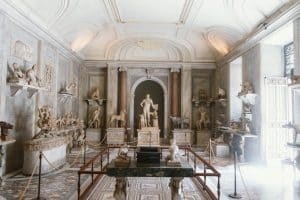Cultural Landmarks That Tell a Nation’s Story
Cultural landmarks play a significant role in a nation’s identity and history. These landmarks serve as a representation of a country’s culture, heritage, and people. From ancient ruins to modern-day structures, these landmarks are not just mere tourist attractions, but they hold a deeper meaning that tells the story of a nation. In this article, we will explore some of the most iconic cultural landmarks that tell the story of different nations and their people.
The Great Wall of China
One of the most famous landmarks in the world, the Great Wall of China, is a symbol of China’s rich history and culture. This massive structure stretches over 13,000 miles and took over 2,000 years to build, making it one of the most impressive engineering feats in human history. It was built to protect the Chinese empire from invaders, but it has also served as a connection between different regions and has witnessed the rise and fall of dynasties.
The Taj Mahal
The beautiful white marble mausoleum located in Agra, India, is not just a monument of love, but it also represents the Mughal’s architectural genius. Commissioned by the fifth Mughal emperor, Shah Jahan, the Taj Mahal served as the final resting place for his beloved wife, Mumtaz Mahal. The intricate carvings, exquisite gardens, and the stunning dome make it one of the most iconic landmarks in the world. It also reflects the fusion of different cultures and traditions in India.
The Pyramids of Giza
The only remaining wonder of the ancient world, the Pyramids of Giza, are a testament to the advanced architectural and engineering skills of the ancient Egyptians. These impressive structures were built over 4,500 years ago and served as tombs for the Pharaohs. The Pyramids also give insight into the advanced beliefs and rituals of the ancient Egyptians and their obsession with death and the afterlife.
The Eiffel Tower
The iconic Eiffel Tower stands tall in the city of love, Paris, and embodies the artistic and cultural essence of France. Built-in 1889, the Eiffel Tower was originally intended to be a temporary structure for the World Fair but became a permanent landmark due to its popularity. This iron lattice tower has become a symbol of French culture and has been featured in countless movies, books, and works of art.
The Statue of Liberty
No other landmark represents the United States of America better than the Statue of Liberty. Located in New York City, this iconic statue is a symbol of freedom, democracy, and opportunity. Gifted to the US by the French, Lady Liberty has been welcoming millions of immigrants to the country since 1886. The statue also stands as a reminder of the American dream and the values it represents.
The Colosseum
The Colosseum, also known as the Flavian Amphitheatre, is the largest amphitheater ever built and is a significant landmark in Rome, Italy. It held gladiator battles and other public spectacles during the Roman Empire and has become a symbol of the power, innovation, and grandeur of the ancient Romans. Even though it is now in ruins, it continues to attract millions of visitors every year and remains a testament to the enduring legacy of the Roman civilization.
The Acropolis
The Acropolis, located in Athens, Greece, is a UNESCO World Heritage Site and is considered one of the greatest architectural and artistic masterpieces in the world. Built over 2,400 years ago, this citadel served as a religious center and a symbol of Greek power and dominance. The Parthenon, the most famous structure in the Acropolis, is dedicated to the goddess Athena and stands as a prime example of ancient Greek architecture.
The Sydney Opera House
This iconic performing arts center located in Sydney Harbour, Australia, is not just an architectural marvel but also reflects the modern Australian culture and identity. Designed to resemble a ship’s sails, this building has become one of the most recognizable landmarks in the world and is a testament to the country’s love for the arts and music.
Cultural landmarks not only highlight a nation’s past and present, but they also serve as a bridge between different cultures and have the power to bring people together. They are a symbol of a nation’s identity, representing its beliefs, values, and history. So, the next time you visit a cultural landmark, take a moment to appreciate its beauty and significance, and you might find yourself uncovering the story of a nation.










